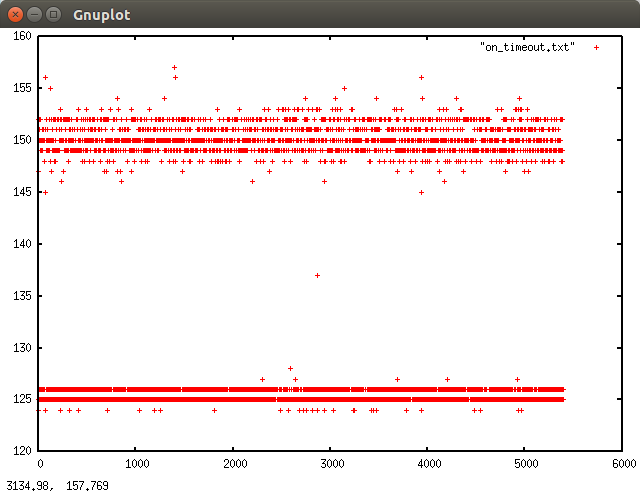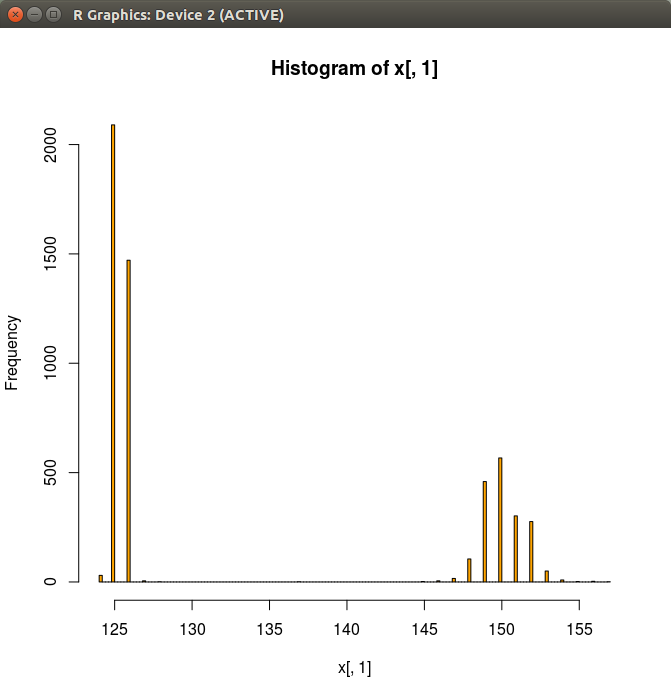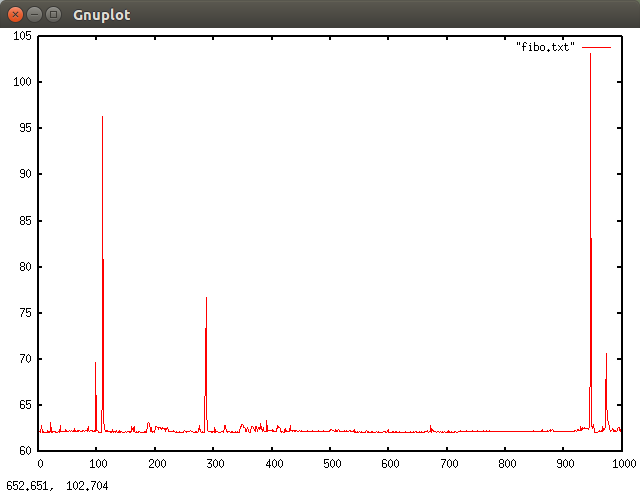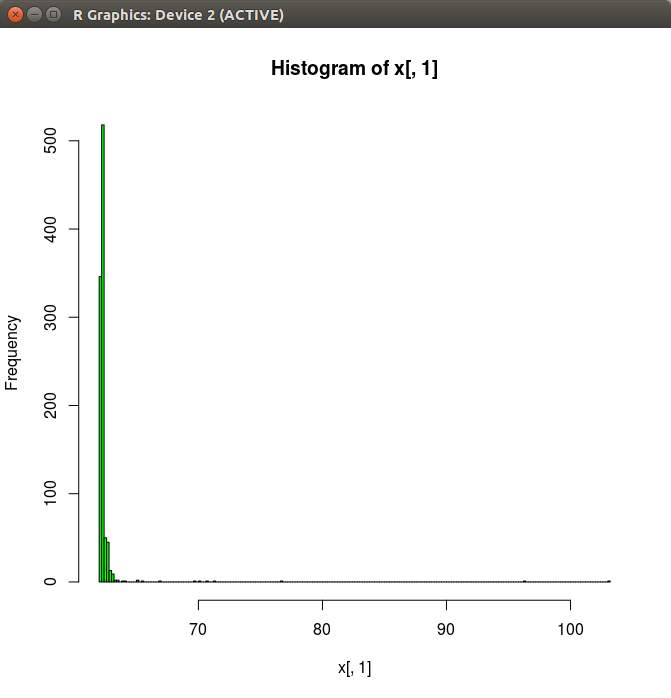Measured timeout intervals using std::chrono.
bool MyDrawingAreaS::on_timeout() {
current = chrono::system_clock::now();
auto diff1 = current - start;
auto diff2 = current - current_b4;
current_b4 = current;
cout << "MyDrawingAreaS::on_timeout(): elapsed time = " << chrono::duration_cast<std::chrono::milliseconds>(diff1).count()
<< " msec (delta = " << chrono::duration_cast<std::chrono::milliseconds>(diff2).count() << " msec), count = "
<< count << ", nch = " << nch << endl;
% grep timer_value log.txt
SoundIC7410::SoundIC7410(): timer_value = 125
% grep "MyDrawingAreaS::on_timeout(): elapsed time" log.txt | head -1
MyDrawingAreaS::on_timeout(): elapsed time = 147 msec (delta = 147 msec), count = 2, nch = 1
% grep "MyDrawingAreaS::on_timeout(): elapsed time" log.txt | awk '{print $9}' > on_timeout.txt
% gnuplot
> plot "on_timeout.txt"
% R
> x<-read.csv("on_timeout.txt")
> hist(x[,1], col="orange", breaks=200)
I do not know if the result is reasonable or not. With a very simple program like this:
#include <iostream>
#include <chrono>
void f(int n)
{
// lots of stuff
}
int main()
{
std::chrono::time_point<std::chrono::system_clock> start, end, endb4;
start = std::chrono::system_clock::now();
endb4 = start;
int n=35;
for(int i=0;i<1000;i++) {
f(n);
end = std::chrono::system_clock::now();
std::chrono::duration<double> elapsed_seconds = end-endb4;
endb4 = end;
if(i>0) std::cout << elapsed_seconds.count() << endl;
}
}
we have the following results.
Please also see my previous articles: Timeout Intervals, and Timeout Intervals (2).




